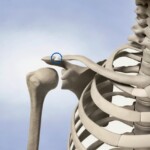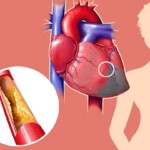Biodecoding teaches us that every symptom or disease has a biological meaning, which means our bodies use these symptoms as a way to resolve emotional conflicts. This holistic approach considers that we are not just physical beings, but we operate integrally on three levels: physical, psychic and emotional.
The Role of Biological Meaning in Disease
According to the fundamental premise of biodecoding, each symptom or disease has a biological meaning. This means that the body uses these symptoms on the biological level to try to resolve an emotional conflict. This approach considers that we are not just physical beings, but we function integrally on three levels: physical, psychic and emotional. These levels are constantly interrelated, even though we are often unaware of it.
The Importance of Tripolarity
The concept of tripolarity is fundamental in biodecoding. It means that every event has a simultaneous reflection on the physical, psychic and emotional levels.
For example, emotional stress not only affects our minds but also our bodies. The biological meaning of a symptom is the key to understanding which psychic and emotional conflict it is related to. The first question we must ask ourselves is: What is the biological utility of this symptom?
A practical example can be seen in a woman who was producing many red blood cells. The body produces more red blood cells at high altitudes due to the lower availability of oxygen. This woman saw her husband depressed and wanting to commit suicide and in her mind, unconsciously, she wanted to “give him life.” Her body responded by producing more red blood cells, a biological response to the “death in my family.”
The Biological Meaning is Unconscious
It’s important to understand that the biological meaning of a symptom is unconscious and works automatically. A common example is how the body reacts to the sun. If we spend many hours on the beach without protection, the body perceives this as an aggression. The skin becomes inflamed to try to recover and if this exposure is repeated, our skin tans as a protective measure.
The skin has a biological meaning of protection from the outside. This mechanism can be activated in situations of emotional stress. Another example is a young woman who experienced an uncomfortable situation while showering after a gym class and developed black spots on her skin, a melanoma, as a way of “protecting” herself from an inappropriate gaze.
Biological Adaptation in Nature
The capacity for biological adaptation is an observable phenomenon throughout nature. Chickens lay eggs every day if they disappear, adapting to the situation. A lioness will have as many cubs as her hunting territory can sustain. These examples show how living beings biologically adapt to their environmental circumstances to ensure their survival.
Examples of Biological Adaptation
- Chickens: lay eggs continuously if they disappear. If we don’t collect them, they stop laying after reaching a certain number.
- Lionesses: the number of offspring depends on the size of their hunting territory.
- Fish: lay thousands of eggs daily to ensure the survival of some and in dangerous situations, protect their eggs in their mouths.
These behaviors are automatic biological responses to perpetuate the species. Biological adaptation is an innate response and doesn’t require a conscious decision.
Finding the Biological Meaning of the Symptom
Fighting the symptom is essentially fighting ourselves. To understand this better, let’s consider some specific examples:
Frozen Shoulder
A frozen shoulder can be the body’s response to an emotional conflict related to the burden of responsibilities or the inability to act. From the perspective of biodecoding, the shoulder is a part of the body that symbolizes the ability to bear loads and take action.
If a person faces a situation where they feel an emotional burden or an inability to act in front of a problem, their body could respond with shoulder immobilization. This symptom becomes a way to protect the individual from continuing to bear that burden or face that situation.
Ovarian Cancer
Ovarian cancer can be linked to emotional conflicts related to procreation, sexuality, or family relationships. The ovaries, from a biological and emotional perspective, are directly connected to creation and lineage.
A deep conflict in these areas, such as the unfulfilled desire to have children, problems in a relationship, or intense family conflicts, can biologically manifest as cancer in the ovaries. In this case, the body is trying to adapt to an unresolved emotional conflict by generating cancerous cells.
Hair Loss
Hair loss can be the body’s reaction to an emotional conflict related to the loss of power, identity, or protection. Hair can symbolize strength and protection.
An emotional conflict involving a significant loss in any of these areas could lead the body to trigger hair loss. For example, a person who has lost their job, is facing a significant breakup, or feels their identity is being attacked may experience this symptom as a biological response to their internal conflict.
These examples demonstrate that physical symptoms can be interpreted as the body’s responses to unmet biological needs. Each symptom is an attempt by the body to adapt to the emotional circumstances the individual is facing.
Understanding Disease as a Solution
When we understand that disease is a biological solution, our perspective on health changes. This allows us to see symptoms not as enemies but as indicators that something needs to be addressed within us. This understanding can guide a more compassionate and effective approach to treating diseases, considering both emotional and physical aspects.
Holistic Approach to Treatment
Instead of focusing solely on suppressing symptoms, biodecoding invites us to explore and resolve underlying emotional conflicts. This holistic approach involves:
Identifying the conflict: The first step is to identify the emotional or psychic conflict that may be causing the symptom. This can be achieved through introspection, therapeutic dialogue, or biodecoding techniques.
Resolving the conflict: Once identified, it is essential to work on resolving this conflict. This may include psychological therapy, lifestyle changes, or consciously facing difficult situations.
Reinterpreting the symptom: Seeing the symptom as an ally that indicates areas of our life that need attention and change. This reinterpretation allows us to approach our health with greater empathy and understanding.
Benefits of this Perspective
Adopting this perspective can provide several benefits:
Reduction of stress: Understanding that our symptoms have a biological purpose can reduce the anxiety and fear associated with illness.
Improvement in emotional health: Working on underlying emotional conflicts not only helps alleviate physical symptoms but also improves our emotional health.
Personal empowerment: This understanding empowers us, giving us the tools to take an active role in our healing process.
Conclusion
Biodecoding invites us to explore the unconscious biological meaning behind each symptom. This integrative approach considers how our emotional and psychic conflicts manifest in the body.
By understanding that symptoms are biological responses to emotional conflicts, we can address them more holistically and effectively. Recognizing that disease is an attempt at a solution allows us to work in harmony with our bodies, seeking to resolve underlying conflicts and promoting integral health.
The cover image has been provided courtesy of Depositphotos.com
Transform your emotional and spiritual life with a personalized tool
Discover the power of Biodecoding combined with Kabbalah. Through your Personal Kabbalistic Tree, designed based on your name and date of birth, you’ll receive a practical guide to work on your emotions and achieve holistic well-being.





